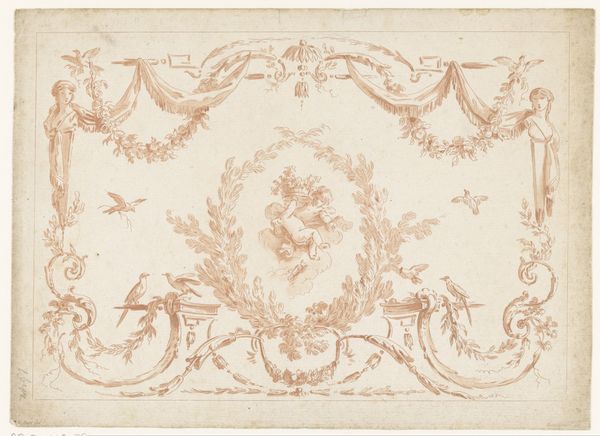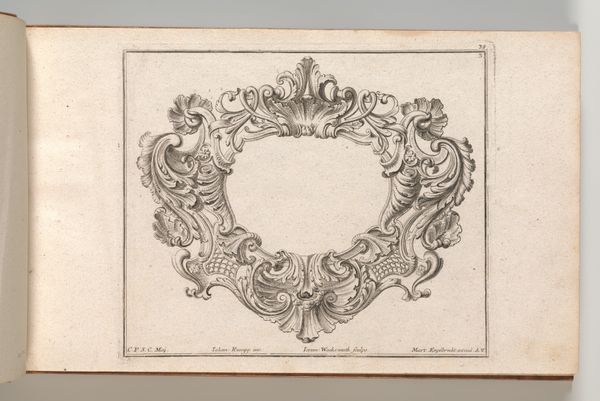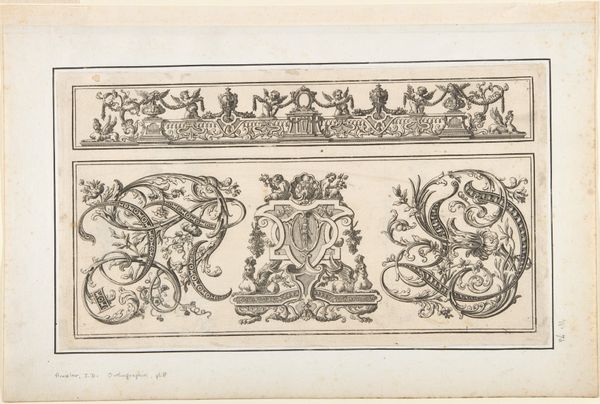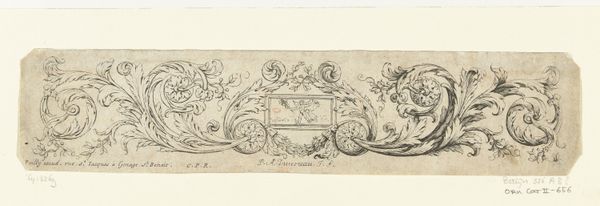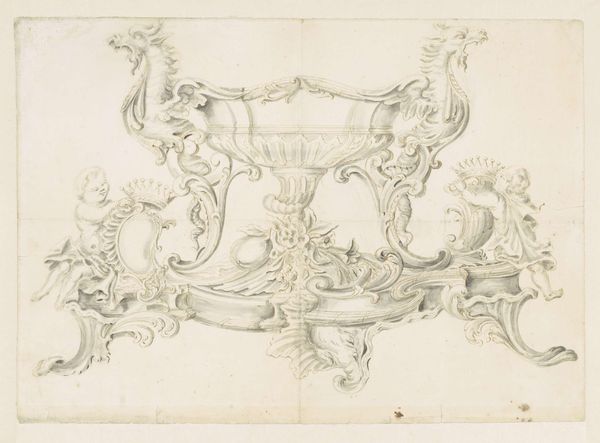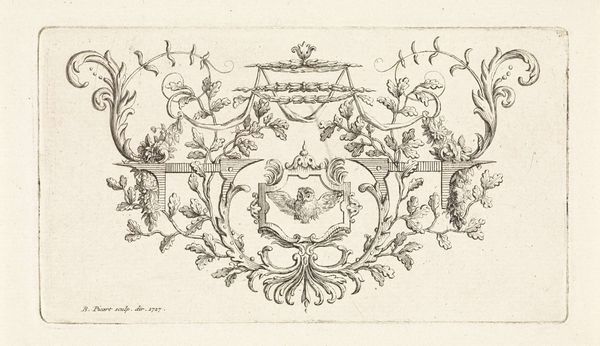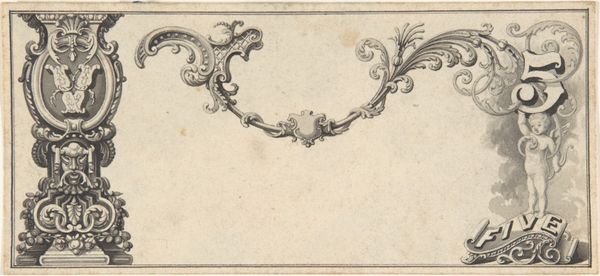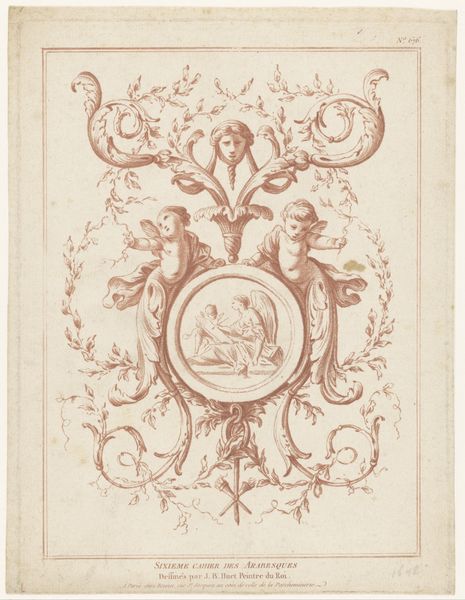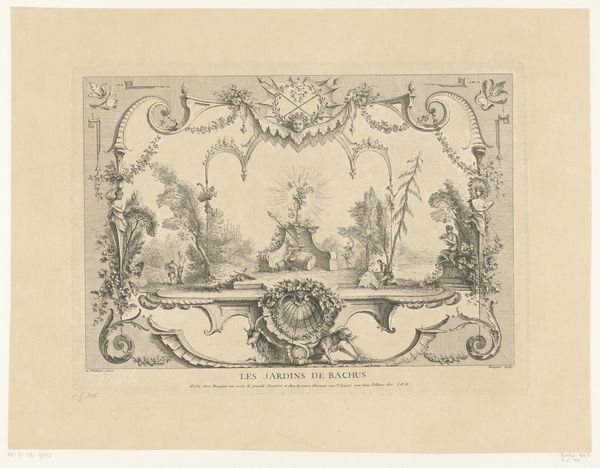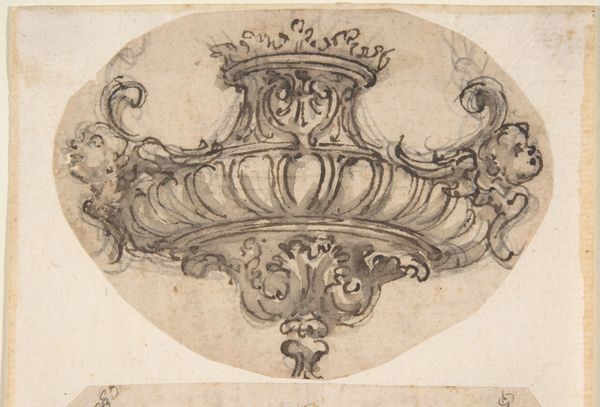
Dimensions: height 181 mm, width 241 mm
Copyright: Rijks Museum: Open Domain
Curator: At first glance, these twin friezes seem almost dreamlike, like a faint memory resurfacing on aged paper. Editor: Indeed. We’re looking at "Twee friezen met arabesken," or "Two Friezes with Arabesques," an etching made circa 1770-1780 by an anonymous artist. The medium is etching on paper. Immediately, one notices the meticulous, flowing linework—a hallmark of the Baroque style, wouldn’t you agree? Curator: Absolutely. Baroque with a hint of a secret language... Look how the birds and foliage intertwine. They're not just decorations; they feel like whispers, you know? Maybe secrets between the artist and the patron of the time. Editor: The friezes employ semiotic components commonly used at the time for signifying wealth. The mirroring of avian figures reflects notions of duplicity while calling attention to both absence and presence simultaneously. Note, the cartouches appear on the top and bottom. Curator: They're like symmetrical daydreams! The overall feel isn’t opulent, as I'd expect from baroque—it feels gentle, domestic, hopeful. The almost faded sepia ink adds a sense of antiquity and tranquility. There is beauty in how light this all seems. Editor: Precisely, a kind of calculated lightness. The arabesque, as a design motif, has a history stretching back centuries. Here, in this iteration, it signifies a control over nature through art. Curator: Perhaps it reveals how much we crave order and elegance. Like trying to arrange our own unruly thoughts into tidy patterns. I keep getting lost in this. What do you think this piece is trying to tell us about design principles of that time? Editor: The artist is exploring an intrinsic play between ornamentation and functionality, typical for art in 18th century France. Curator: Looking at it one last time, it’s lovely how these patterns manage to be both elaborate and restrained. A fleeting snapshot into the tastes and desires of a bygone era. Editor: Agreed. Its deceptive simplicity underscores the enduring influence of formalism in historical eras.
Comments
No comments
Be the first to comment and join the conversation on the ultimate creative platform.
